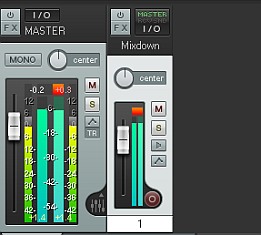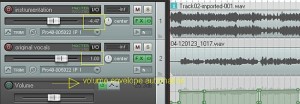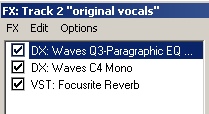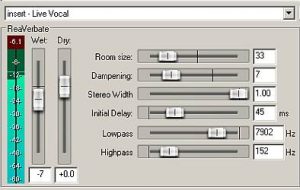Someone asked me to review the quality of vocal mixing on one of their songs. This client is still new to audio mixing and constantly looking for the best vocal processing effects and reverb that can be used to the track. But, the client is not sure how to produce the best vocal sound out of the mix and need some guidance.
So the client sent me a sample mix of the original vocal mixing in mp3 format. The background instrumentation has been done entirely with a software (no live music instrumentation). That works well except that client is unsure how to mix the vocals particularly adding reverb to it.
This is a original sample of the vocal mix done by the client:
Quick comments on the original mix:
1.) Simple listening reveals that the vocal is too strong with respect to the background instrumentation.
2.) Too much reverb has been applied on the vocals. It does not match with the background instrumentation or the entire track as a whole.
3.) The vocal does not sit properly with the mix, indicating that it has not been applied with proper EQ and compression settings.
4.) Quick inspection when the sample mix is loaded in Reaper DAW reveals a clipping particularly associated with the vocals. See below (see the red on top of the level meters):

5.) The vocal quality and recording is good only that it needs more work in the mix to make it sound right.
Being conservative with reverb and processing could sound best
When I have original vocal recording wav file; I provide him a sample of what a vocal mix would sound good according to my ears.
This is what I did:
Step1.) Load the vocal recording in Reaper DAW as well as the minus-one background instrumentation. I then add a volume envelope to automate the control of vocal volume throughout the track.
For example, I apply silence before the start of the vocals to remove unnecessary background noise. Then I also apply silence in between the long pause of the vocals for the same purpose. This would allow me to non-destructively edit the vocal volume.
Balancing the vocal volume with the instrumentation is then done by adjusting the faders as enclosed inside the yellow box.

I then look at the master level meters to make sure there is no clipped signal throughout the track.
Step2.) I only apply 3 effects. The vocal reverb has been placed at the last. And in this example, I am using a Focusrite reverb plug-in.

In the original recording, the vocal mid and highs is a bit lower and the vocals are a bit bassy. So I apply a mild EQ using the following:
Low shelf 150Hz, -3dB
2000Hz, Q=1.0 +2dB
15,000Hz Q=1.4, +1.0dB
I then apply a vocal compression using Waves C4 mono effects to balance the weak and strong section of the vocals. It is using the pop vocal preset. The reverb is using a small bright room presets which will apply a very small amount of reverb to the vocal track. This is the setting I used.

Finally this is the complete mix using the vocal processing procedures above:
As you have observed the vocal now sounds tight and balance in the mix. The vocal reverb has been set to low and the vocals are made to sit with the instrumentation with appropriate EQ and compression settings. Personally, I love the vocals to sound up-front and dry.
But what if you want more reverb? Make sure it sounds great
The reverb depends on the expectation of the producer (depending also on the targeted genre). Sometimes being tight sounds great but the producer might want a longer reverb tail. This requires a lot of listening, balance and experimentation to ensure that the reverb added would not be detrimental to the mix.Also moderation is the key.
Below is a sample vocal mix done with moderate reverb setting (medium jam room presets in Focusrite reverb plug-in):
If you like to use an entirely free plug-in that comes along with Reaper DAW, you can use “insert-live vocal” plug-in. Below is a setting if you want a longer reverb tail:

The trick is to lower the “wet” settings until the desired reverb tail has been achieved. For example in the above screenshot, I set it to -7.
This is a sample vocal mix done with Reaper “insert-live vocal” plugin.
To accurately set reverb and other vocal processing effects, you need to have reliable audio monitoring systems in your home studio and mix at low to moderate volume (friendly to your ears). You should be using nearfield monitors and not computer speakers. Also with reverb processing, I tend to double check the vocal mix with headphones to make it sounds nice in any monitoring environment.
Content last updated on June 14, 2012








2 Responses
Thanks Brenny!
Excellent work!!